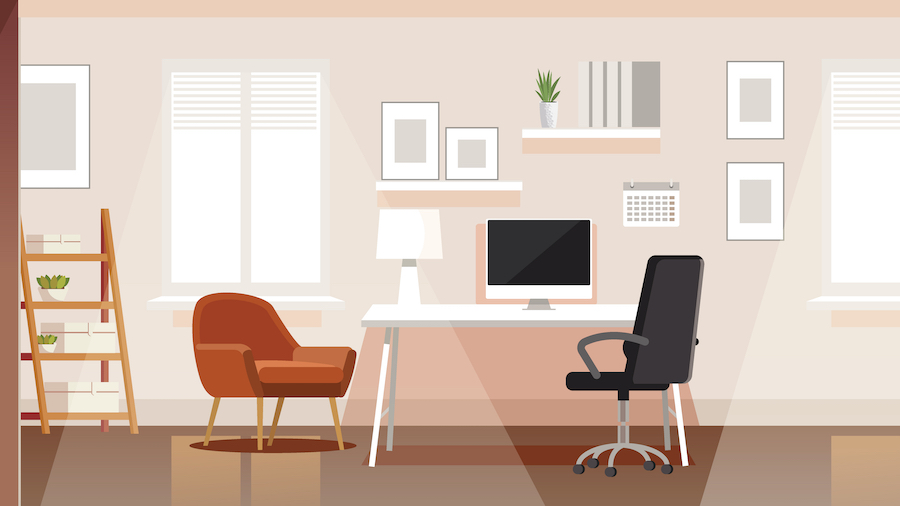3 Quick Ergonomic Fixes for Your Home Office
By Amy Jacques
January 2021
After months of working from home, you may be enjoying some flexibility and independence with your remote life. However, this can come with some tension and a sense of fatigue after sitting for long periods, as well as aches, pains and discomfort.
Adjusting how you sit and focusing on your ergonomic situation can be a game-changer, according to an article on The Muse. “When your body is posturally fatigued, it’s going to affect how you think, process information and work overall,” says Andre Arthur, a certified ergonomic and rehabilitation specialist.
Sitting at a desk that’s too low or spending long periods of time hunched over in an uncomfortable chair can have negative and long-lasting effects on the body. In fact, some postures can increase the risk of musculoskeletal issues, says Ellen Kolber, an occupational therapist and founder of ErgonomicsNYC.
Start by choosing a chair that supports your body and where you can sit comfortably for a long period of time with a neutral posture. The chair should provide upper and lower back support, along the natural S-shape curve of your spine, the lumbar region.
While purchasing an office chair with adjustable height and armrests would be the best ergonomic solution, a more inexpensive fix would be to place a small pillow at the rear of your chair to support your lower back if there’s a gap between your spine and chair.
Many of us are actively sitting — flexing or scrunching up as we type or click the mouse. Instead, try to have passive, neutral seating. “Your shoulders should be relaxed with your elbows, forearms and wrists level with your keyboard and mouse,” says Kolber.
Next, bring your screen up to eye level. You can buy a stand for this, or simply place your computer on a stack of books. Aim for a height that allows you to look directly at the screen. If you’re looking up or down, then you’re placing more stress on your neck, spine and shoulders.
Practice stretching out all your muscles, frequently change positions, and take breaks to stand up, move around and look away from the screen to rest your eyes. A technique called “articular rotation” — slowly rotating your head in a circle from shoulder to shoulder, and holding each side for eight seconds in a stretch — can alleviate tension, stiffness or tightness in your joints.
Here are some tips for improving ergonomics when working from home.
• Find a chair that supports your body.
• Position your knees and elbows correctly.
• Bring your screen up to eye level.



